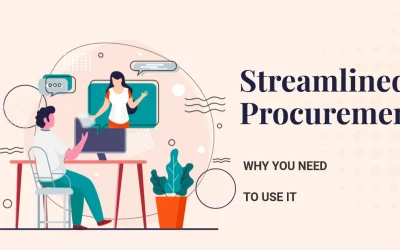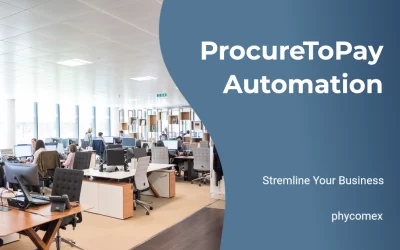Are you looking to increase efficiency within your procurement process? Look no further! This guide unveils the secrets to effective procurement management with step-by-step instructions.
You’ll gain knowledge of the cycle overview, process, people, paperwork, and seven-step process.
Get an understanding of the importance of identifying business needs, purchase requisitions and approvals, and vendor selection and contract negotiation.
Harness the power of this guide to reap the rewards of an efficient procurement process.
Overview of Procurement Cycle
Understanding the procurement cycle is essential for any business to ensure an efficient process. Procurement is the process of obtaining products or services from external vendors.
The cycle is composed of several stages, beginning with contract negotiation and vendor delivery. Optimizing the procurement cycle calls for an understanding of business requirements and careful selection of suppliers.
Strategies for vendor evaluation and cost-benefit analysis should also be employed to ensure the transaction is risk-free and cost-effective. The number of parties involved and paperwork generated depend on the complexity of the procurement process. Documentation such as bids, invoices, and purchase orders are used for record-keeping.
Stakeholders should ensure effective communication and collaboration for a successful procurement cycle.
Process in Procurement Management
You can better understand the process in procurement management by breaking it down into distinct steps. It includes guidelines for browsing, placing orders, acquiring, and paying for goods and services. Checkpoints and procedures need to be established to improve efficiency and control cost.
Different stakeholders with specific responsibilities are involved in a complex procurement lifecycle. Effective communication and collaboration among them are crucial for the success of the process.
The documents involved include bids, contracts, invoices, and purchase orders. These must be maintained for reference and auditing purposes to ensure transparency and accountability. Efficient record-keeping also facilitates supplier performance analysis and evaluation.
People in Procurement Management
| You’ll need to understand the various stakeholders involved in an efficient procurement process. | Stakeholder | Responsibility |
|---|---|---|
| Buyer | Negotiating, Bidding | |
| Vendor | Delivering Goods & Services |
Collaboration and effective communication are essential among all stakeholders to ensure success. The buyer is responsible for negotiating and bidding, while the vendor is responsible for delivering goods and services. By understanding the roles of each stakeholder, you can create a system that ensures clarity and accountability. Additionally, regular performance review and evaluation will ensure that each party is meeting the standards expected.
Paperwork in Procurement Management
You’ll need to understand the paperwork involved in a successful procurement process. Procurement documents include bids, contracts, invoices, and purchase orders.
Digital transformation and automation in procurement are essential for efficient record-keeping. These documents help to facilitate supplier performance analysis and evaluation.
As the complexity of purchasing increases, so does the need for checkpoints and procedures. Proper documentation ensures transparency and accountability.
Additionally, it’s important to keep in mind that the risk and cost of the transaction depend on the number of parties engaged.
7-Step Procurement Process
Understanding the seven-step procurement process is essential for successful procurement management.
The first step is to identify the business needs and create specifications. All stakeholders must present their goals and priorities for review and clearance.
Vendor selection and contract negotiation then take place, with consideration of strategic value, risks, and cost.
Implementation of vendor collaboration is the fourth step, followed by supplier performance evaluation and vendor invoice record-keeping.
Finally, contracts can be renewed if the needs are still being met.
It’s important to have effective communication and collaboration among stakeholders, as this ensures the success of the procurement process.
Vendor selection and supplier performance evaluation are crucial pieces of the process.
Identification of Business Needs
By understanding the process of identifying business needs, you can ensure an efficient procurement process. This involves gathering information to find acceptable vendors and start dialogues, considering factors like user licenses and non-negotiable characteristics.
Here are three key elements to keep in mind:
- Vendor selection strategies: Identify the best suppliers based on their capabilities, cost, and delivery times.
- Market research: Understand the current market trends and prices for the products/services you’re looking to procure.
- Prioritizing: Establish the strategic value, risks, and expense caps associated with each procurement.
Identifying business needs sets the foundation for the procurement process. It’s important to keep in mind these three factors to ensure a successful procurement process.
Purchase Requisitions & Approvals
Getting approval for your purchase requisitions is key to a successful procurement process. Streamlining approval workflows and maximizing efficiency in purchase requisitions are essential for cost savings and reduced purchase cycles.
To ensure that all stakeholders are on board for the purchase decision, the requisition must be approved by those with the authority to do so. This includes gathering information to present goals and priorities for review and clearance, considering factors like strategic value, risks, and expense caps, and setting departmental purchasing limits.
Using these strategies helps to ensure that the procurement process is properly managed and that all parties involved are aware of the details and risks. This creates an environment of transparency and accountability that will lead to successful and cost-effective procurement.





0 Comments